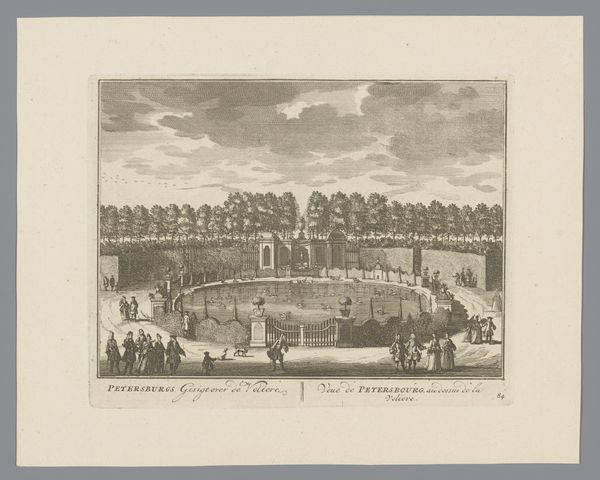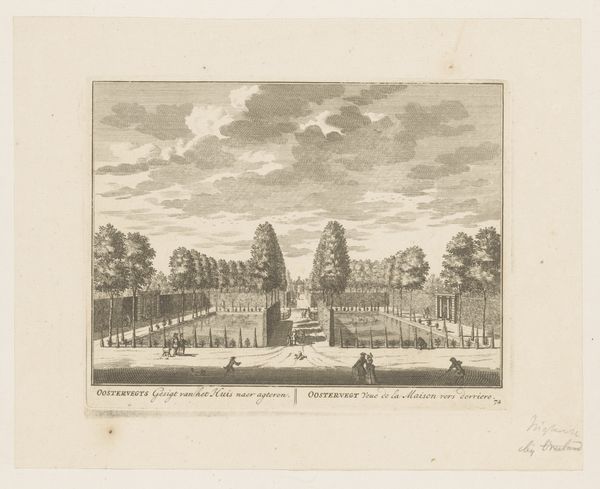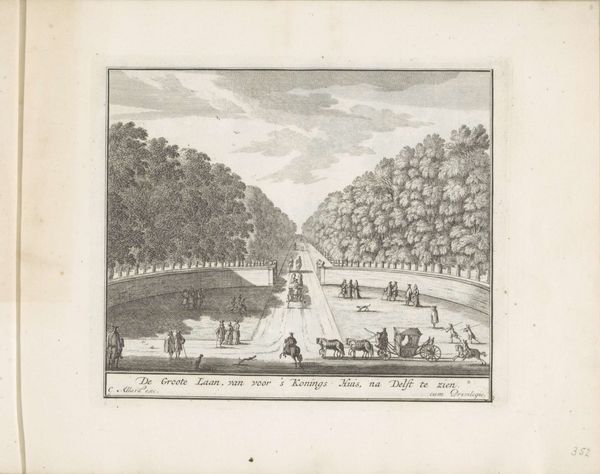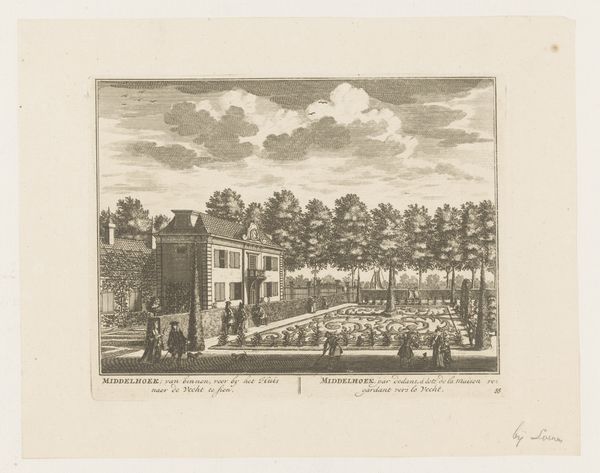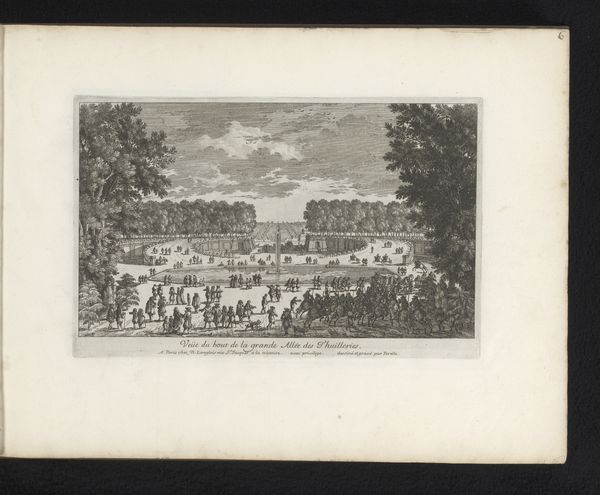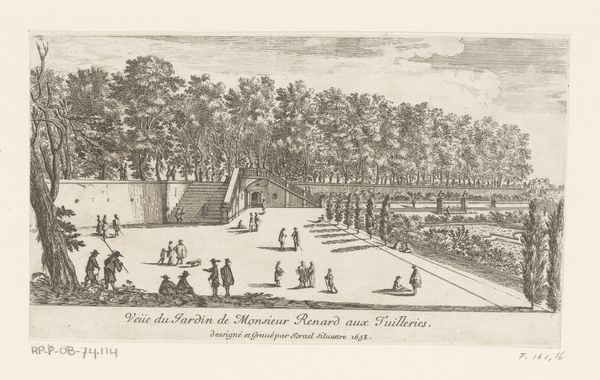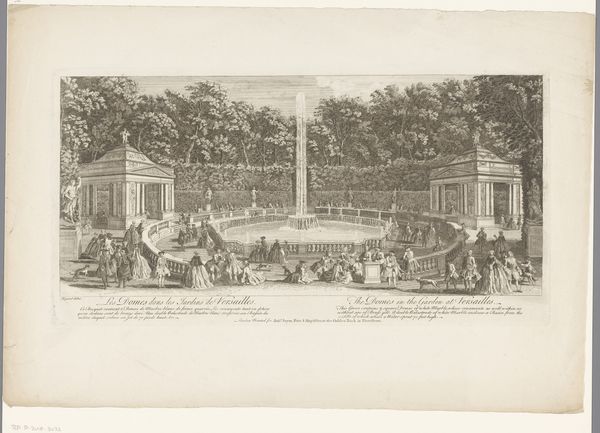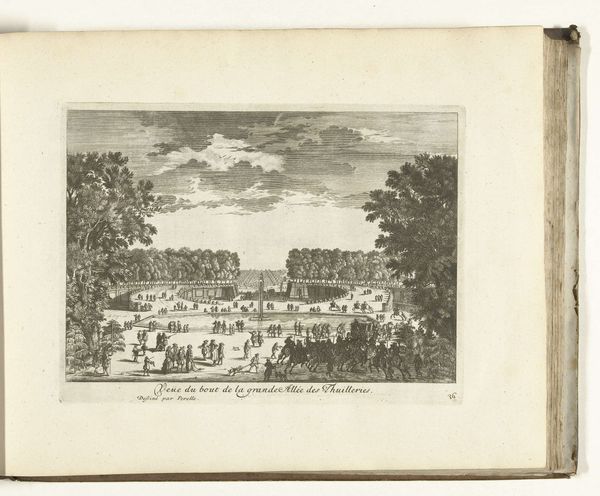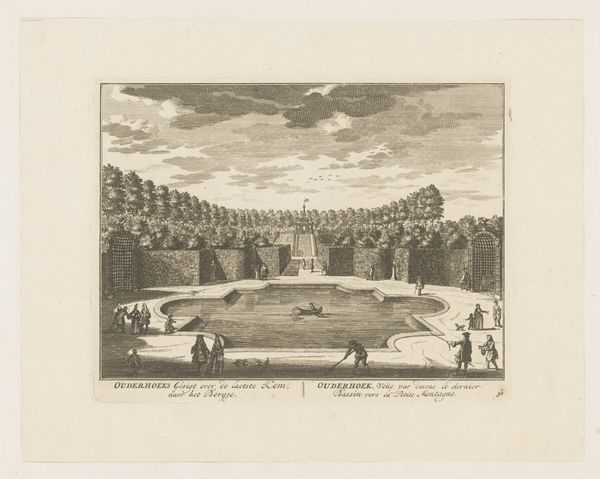
Laan met rijtuigen en wandelaars op Honselaarsdijk Possibly 1696 - 1774
0:00
0:00
cornelisiidanckerts
Rijksmuseum
print, engraving
#
baroque
#
dutch-golden-age
# print
#
landscape
#
perspective
#
cityscape
#
genre-painting
#
engraving
Dimensions: height 139 mm, width 169 mm
Copyright: Rijks Museum: Open Domain
Curator: This is Cornelis Danckerts' "Laan met rijtuigen en wandelaars op Honselaarsdijk," dating possibly from 1696 to 1774. It's a detailed engraving of a grand avenue. Editor: It strikes me as quite formal. There's a distinct separation between the foreground figures and that seemingly endless lane, flanked by trees, receding into the distance. An almost dreamlike serenity permeates the entire image. Curator: Yes, the avenue offers a compelling perspective exercise, representative of the period's emphasis on order and control in both the built environment and society. Look at how the social hierarchy is on display – from the carriages to the pedestrians. The lane becomes a stage for performing social status. Editor: I am especially intrigued by the gateway structure. Is it a deliberate demarcation – visually suggesting both a physical barrier and a symbolic threshold into perhaps a different psychological or social realm? What about those figures who point and gesture – do they symbolize communication or observation of cultural mores? Curator: Certainly, it alludes to ideas surrounding accessibility and privilege. We can interpret this grand avenue, then, as a deliberately crafted space embodying the intersection of class, gender, and power within Dutch Golden Age society. Who is included and who is excluded from this seemingly idyllic landscape is very telling. Editor: It also occurs to me that avenues such as this could embody collective cultural aspiration. What I find noteworthy is the careful balance maintained throughout the print, offering visual delight to viewers but ultimately prompting further exploration into deeper implications and social commentary related to Dutch culture and period perspectives. Curator: Absolutely. Reflecting on the piece through a contemporary lens encourages us to examine ongoing power structures and how they manifest within seemingly neutral public spaces. Art remains a mirror held up to society, prompting important conversations across centuries. Editor: It reminds me how visual language carries meaning through generations; symbols adapt, meanings evolve, and thus visuality itself morphs. Art provides a valuable medium through which culture can re-define and examine its ethos, beliefs and dreams.
Comments
No comments
Be the first to comment and join the conversation on the ultimate creative platform.
